Introduction to the Special Issue on Longleaf Pine
1. Introduction
2. Carbon Sequestration
3. Fire
4. Genetics and Evolutionary Traits
5. Planting Stock Production
Funding
Institutional Review Board Statement
Informed Consent Statement
Data Availability Statement
Conflicts of Interest
References
- Frost, C.L. Four centuries of changing landscape patterns in the longleaf pine ecosystem. In Proceedings of the Tall Timbers Fire Ecology Conference 18; Tall Timbers Research, Inc.: Tallahassee, FL, USA, 1993; pp. 17–43. [Google Scholar]
- Schmidtling, R.C.; Hipkins, V. Genetic diversity in longleaf pine (Pinus palustris): Influence of historical and prehistorical events. Can. J. For. Res. 2018, 28, 1135–1145. [Google Scholar] [CrossRef]
- Chapman, H.H. Is longleaf type a climax type? Ecology 1932, 13, 328–334. [Google Scholar] [CrossRef]
- Aubrey, D.P. Grass(stage) root movement to ensure future resilience of longleaf pine ecosystems. New For. 2021. [Google Scholar] [CrossRef]
- Hare, R.C. Contribution of bark to fire resistance. J. For. Res. 1965, 63, 248–251. [Google Scholar]
- Croker, T.C. The Longleaf Pine Story. For. Conserv. Hist. 1979, 23, 32–43. [Google Scholar] [CrossRef]
- Van Lear, D.H.; Carroll, W.; Kapeluck, P.; Johnson, R. History and restoration of the longleaf pine-grassland ecosystem: Implications for species at risk. For. Ecol. Manag. 2005, 211, 150–165. [Google Scholar] [CrossRef]
- Longleaf Restoration Initiative. Available online: https://www.bing.com/search?q=americaslongleaf.org&form=ANNH01&refig=1d767aeaccb34d8fb1642e1e97532ebe (accessed on 28 September 2021).
- McIntyre, R.; Gulden, J.M.; Ettel, T.; Ware, C.; Jones, K. Restoration of longleaf pine in the southern United States: A status report. In Proceedings of the 19th Biennial Southern Silviculture Conference 2018, Blacksburg, VA, USA, 14–16 March 2017; pp. 297–302. [Google Scholar]
- Van der Gaast, W.; Sikkema, R.; Voher, M. The contribution of forest carbon credit projects to addressing the climate change challenge. Clim. Policy 2018, 18, 2–48. [Google Scholar] [CrossRef]
- Ludovici, K.; Eaton, R.; Zarnoch, S. Longleaf pine site response to repeated fertilization and forest floor removal by raking and prescribed burning. e-Research Paper RP-SRS-60 2018, 60, 1–9. [Google Scholar]
- Gonzalez-Benecke, C.A.; Zhao, D.; Samuelson, L.J.; Martin, T.A.; LeDuc, D.J.; Jack, S.B. Local and General Above-Ground Biomass Functions for Pinus palustris Trees. Forests 2018, 9, 310. [Google Scholar] [CrossRef] [Green Version]
- Sayer, M.A.S.; Tyree, M.C.; Kuehler, E.A.; Jackson, J.K.; Dillaway, D.N. Physiological Mechanisms of Foliage Recovery after Spring or Fall Crown Scorch in Young Longleaf Pine (Pinus palustris Mill.). Forests 2020, 11, 208. [Google Scholar] [CrossRef] [Green Version]
- Whelan, A.W.; Bigelow, S.W.; Nieminen, M.F.; Jack, S.B. Fire Season, Overstory Density and Groundcover Composition Affect Understory Hardwood Sprout Demography in Longleaf Pine Woodlands. Forests 2018, 9, 423. [Google Scholar] [CrossRef] [Green Version]
- Mugnani, M.P.; Robertson, K.M.; Miller, D.L.; Platt, W.J. Longleaf Pine Patch Dynamics Influence Ground-Layer Vegetation in Old-Growth Pine Savanna. Forests 2019, 10, 389. [Google Scholar] [CrossRef] [Green Version]
- Robertson, K.M.; Platt, W.J.; Faires, C.E. Patchy Fires Promote Regeneration of Longleaf Pine (Pinus palustris Mill.) in Pine Savannas. Forests 2019, 10, 367. [Google Scholar] [CrossRef] [Green Version]
- Butnor, J.R.; Johnsen, K.H.; Maier, C.A.; Nelson, C.D. Intra-Annual Variation in Soil C, N and Nutrients Pools after Prescribed Fire in a Mississippi Longlea Pine (Pinus palustris Mill.) Plantation. Forests 2020, 11, 181. [Google Scholar] [CrossRef] [Green Version]
- Castillo, A.C.; Goldfarb, B.; Johnsen, K.H.; Roberds, J.H.; Nelson, C.D. Genetic Variation in Water-Use Efficiency (WUE) and Growth in Mature Longleaf Pine. Forests 2018, 9, 727. [Google Scholar] [CrossRef] [Green Version]
- Samuelson, L.; Johnsen, K.; Stokes, T.; Anderson, P.; Nelson, C.D. Provenance Variation in Pinus palustris Foliar δ13C. Forests 2018, 9, 466. [Google Scholar] [CrossRef] [Green Version]
- Mims, J.T.; O’Brien, J.J.; Aubrey, D.P. Belowground Carbohydrate Reserves of Mature Southern Pines Reflect Seedling Strategy to Evolutionary History of Disturbance. Forests 2018, 9, 653. [Google Scholar] [CrossRef] [Green Version]
- Sung, S.-J.S.; Dumroese, R.K.; Pinto, J.R.; Sayer, M.A.S. The Persistence of Container Nursery Treatments on the Field Performance and Root System Morphology of Longleaf Pine Seedlings. Forests 2019, 10, 807. [Google Scholar] [CrossRef] [Green Version]
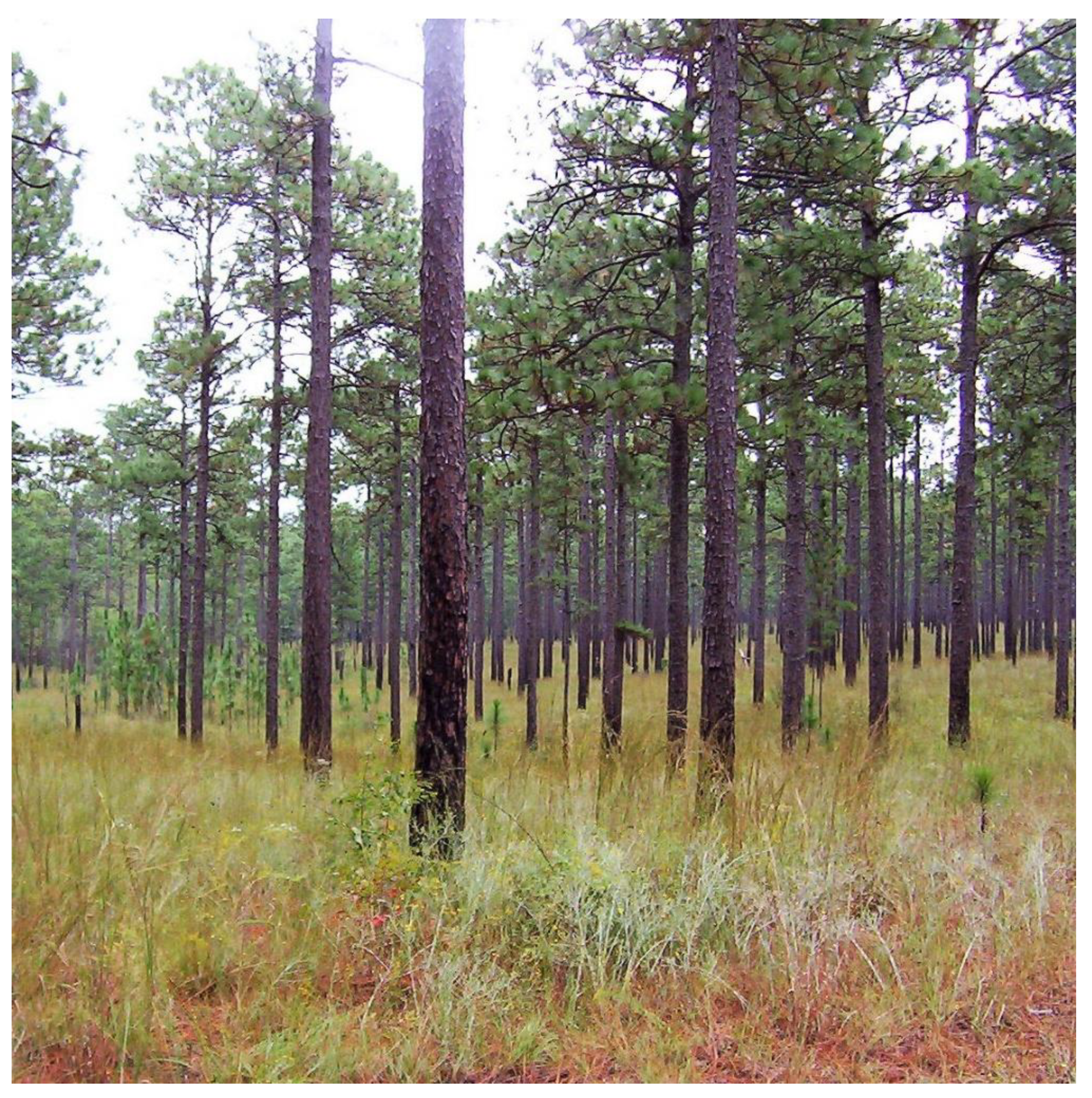
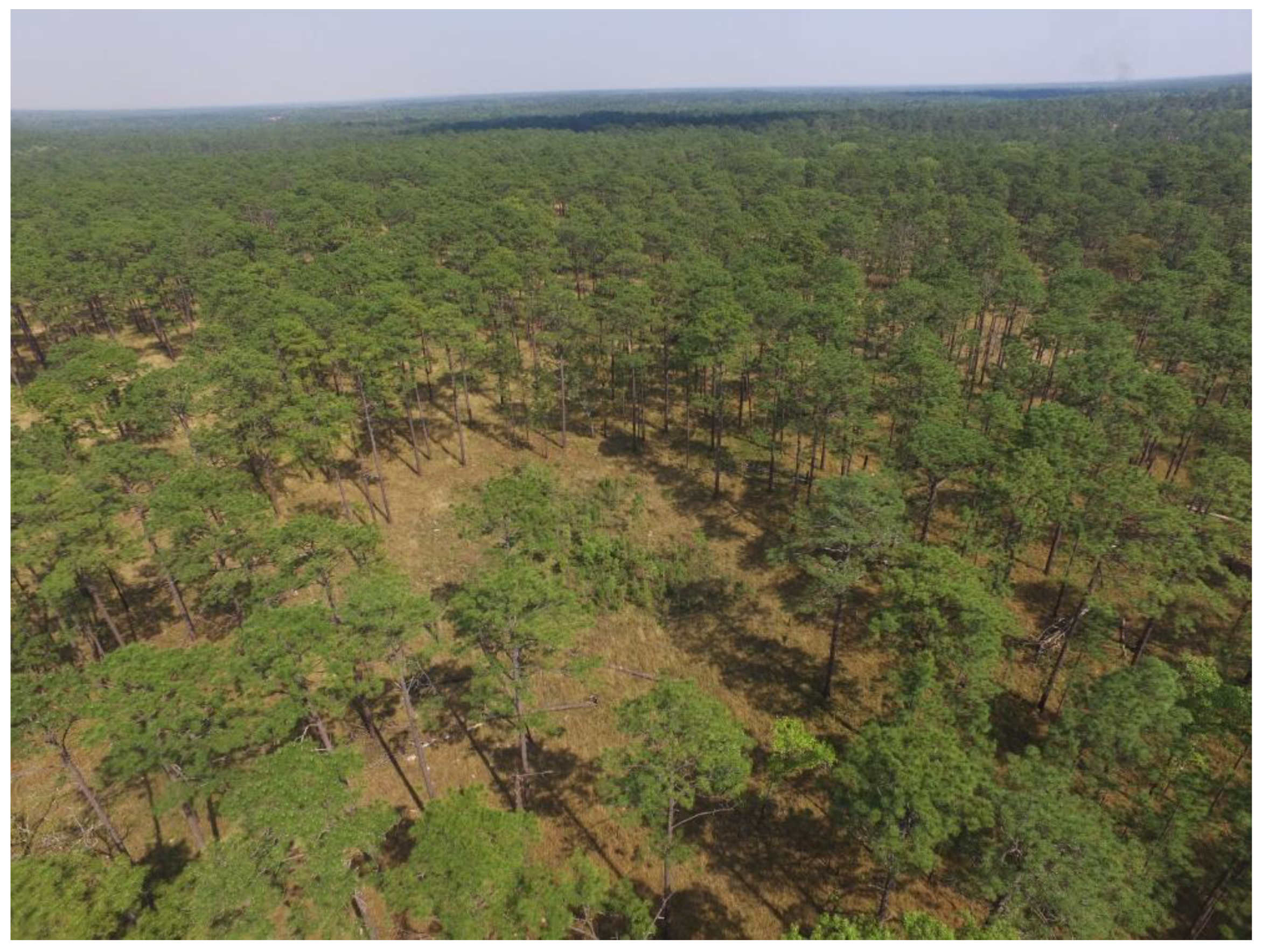
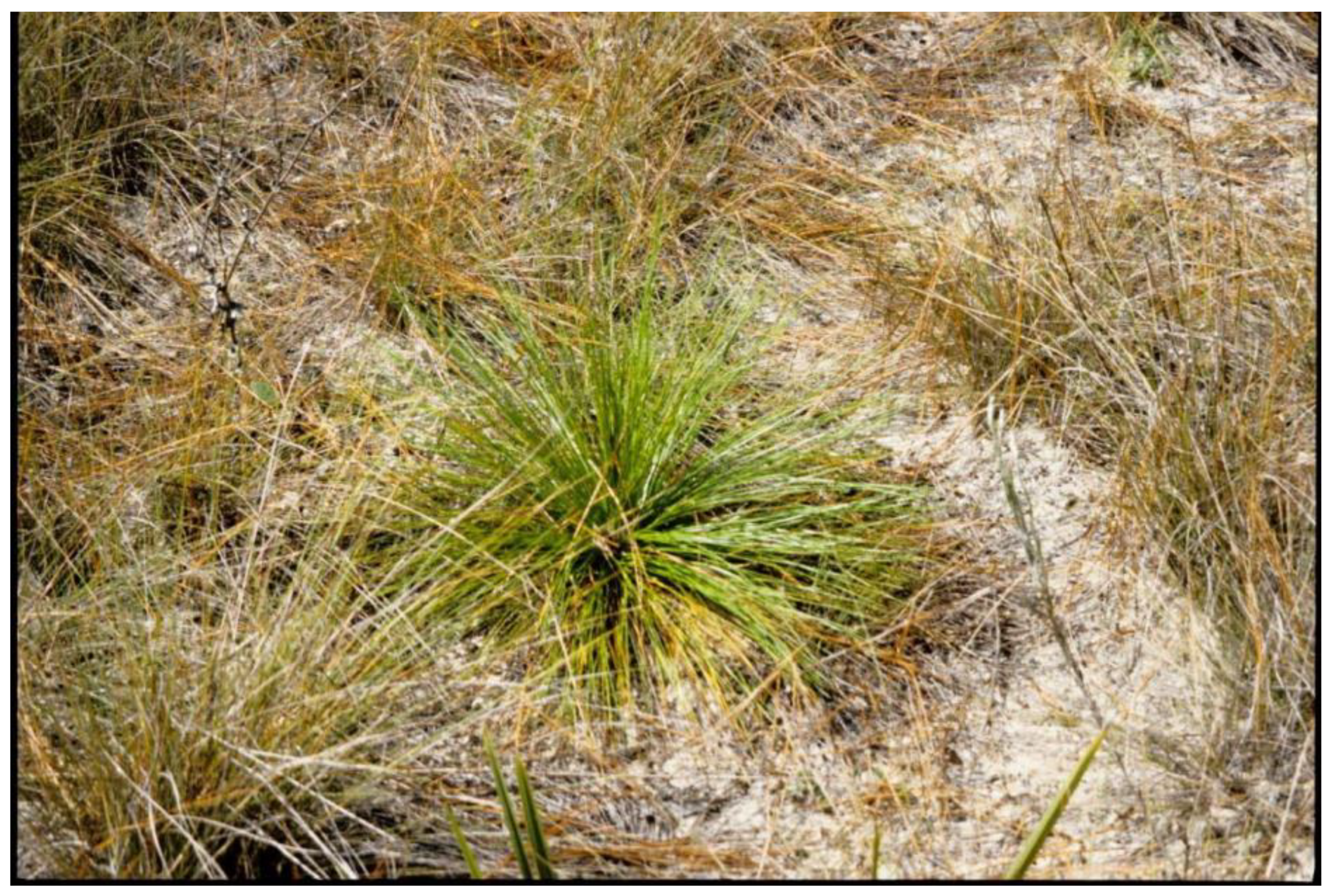
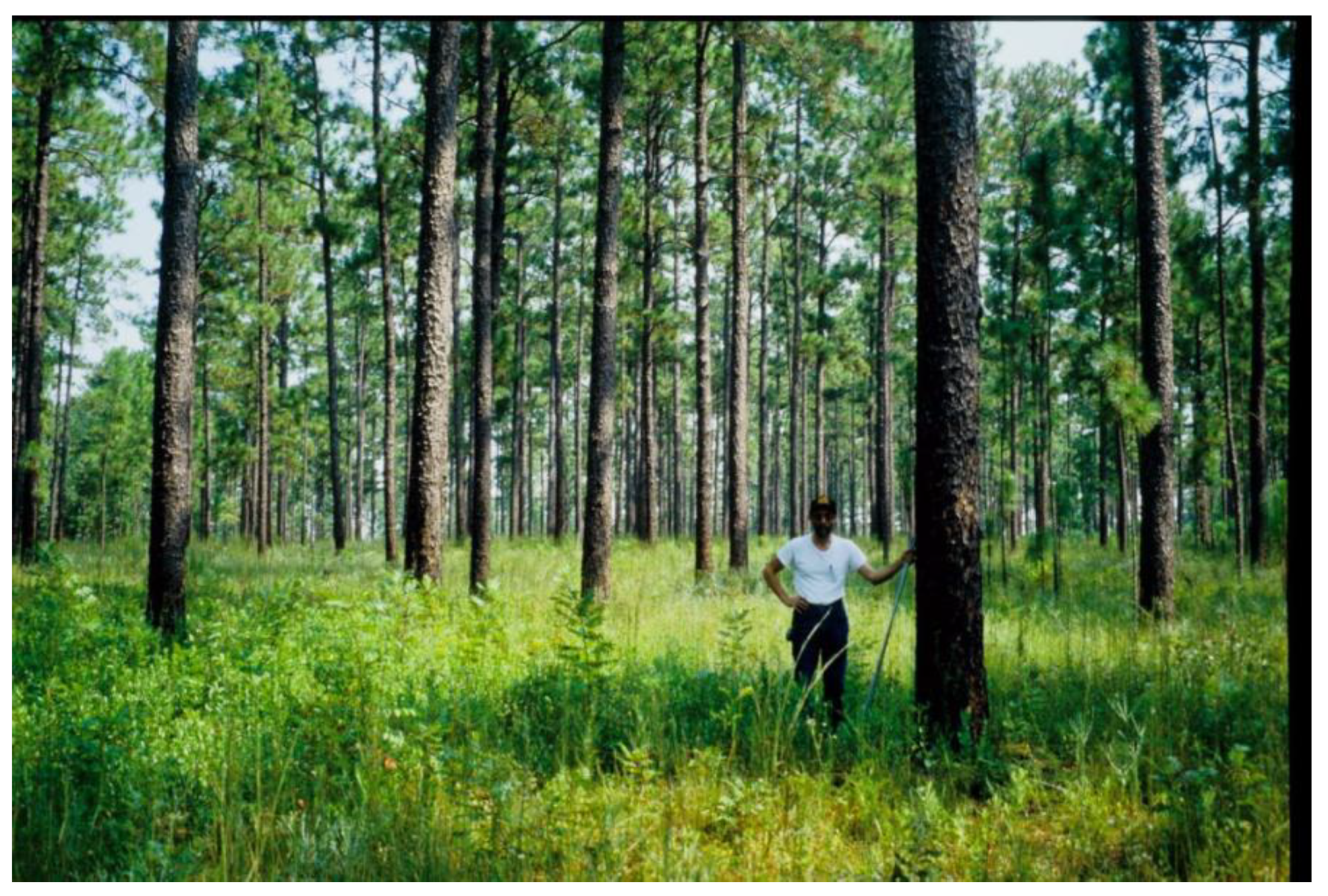
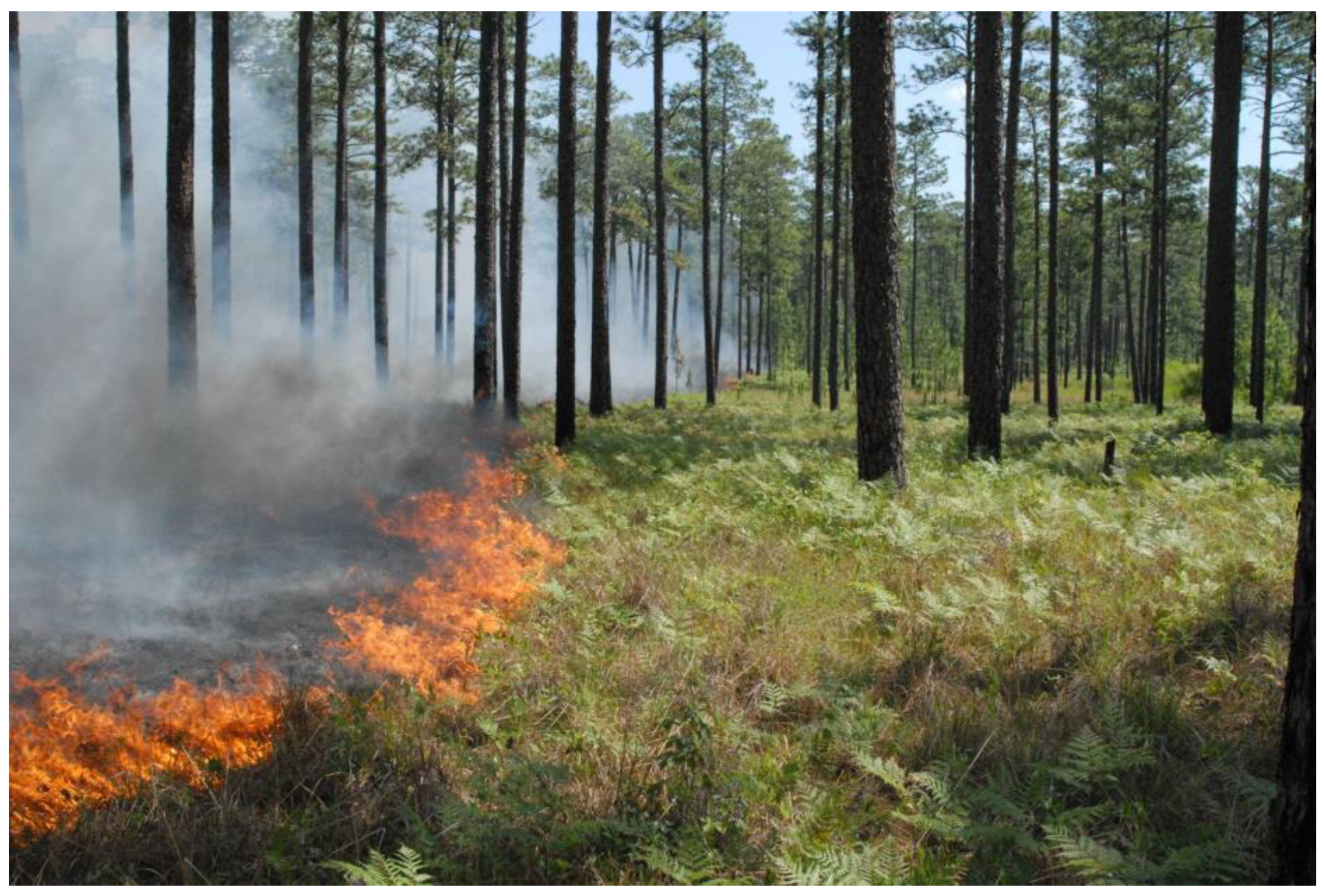
Publisher’s Note: MDPI stays neutral with regard to jurisdictional claims in published maps and institutional affiliations. |
© 2021 by the author. Licensee MDPI, Basel, Switzerland. This article is an open access article distributed under the terms and conditions of the Creative Commons Attribution (CC BY) license (https://creativecommons.org/licenses/by/4.0/).
Share and Cite
Johnsen, K.H. Introduction to the Special Issue on Longleaf Pine. Forests 2021, 12, 1472. https://doi.org/10.3390/f12111472
Johnsen KH. Introduction to the Special Issue on Longleaf Pine. Forests. 2021; 12(11):1472. https://doi.org/10.3390/f12111472
Chicago/Turabian StyleJohnsen, Kurt H. 2021. "Introduction to the Special Issue on Longleaf Pine" Forests 12, no. 11: 1472. https://doi.org/10.3390/f12111472
APA StyleJohnsen, K. H. (2021). Introduction to the Special Issue on Longleaf Pine. Forests, 12(11), 1472. https://doi.org/10.3390/f12111472




